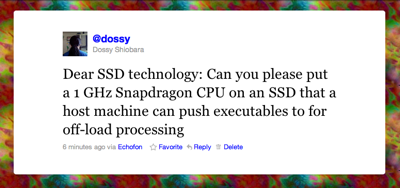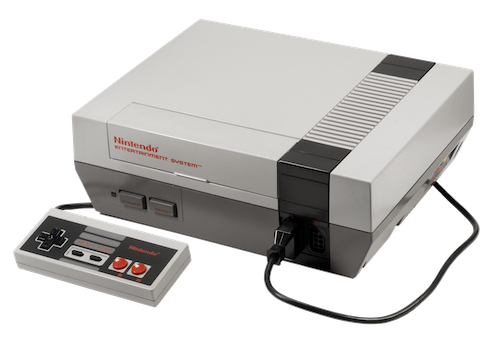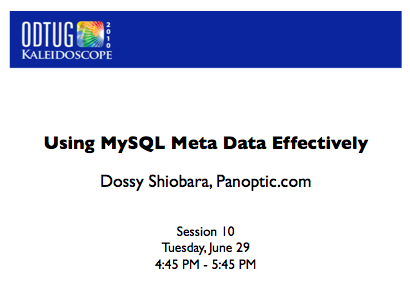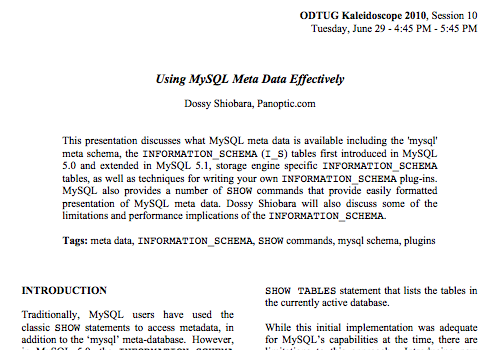I just posted a thought as a tweet, but the more I think about it, the more I hope it actually becomes a reality. Here it is:
Sure, I guess this is pie-in-the-sky dreaming, but it makes total sense: combine fast storage with its own dedicated processor for off-loading of data-oriented tasks. 128GB or 256GB of solid-state disk (SSD) is becoming more and more affordable and the form-factor is tiny, rugged, and is energy-efficient. It already uses an industry-standard, high speed (3.0 Gbps) SATA interface. Modern, energy-efficient mobile CPUs like the 1 GHz Snapdragon are readily available.
How much additional engineering would it require to produce a SSD coupled with such a CPU and an API for pushing executables from a host machine down to the SSD which would run them? Even a design as simple as “create a partition on the SSD with a specific partition-type in a size of your choosing, and write binaries that will execute on the local CPU.” You’d write or use a small embedded OS that would run on the CPU, consume and produce data to the SSD volume, which could then be interacted with by a host machine attached to the device.
In a sense, I guess this is what some specialized data warehouse companies have already done, but this would be an economical, off-the-shelf product that individual consumers could use to accelerate data processing for their own personal needs. It would mark the change in the pendulum swing back from “the cloud” to “the personal computer.” It would, basically, usher in another new age of computing.
I’m sure most people who are still trying to wrap their heads around “the cloud” won’t understand why this would be such a dramatic shift, but I know there’s some visionaries out there who will read this and either totally understand, or already are working towards making this idea a reality. I’d like to be part of, and even perhaps have the opportunity to pioneer it. But, it’s not something I can do alone … maybe someone can introduce me to the right people to work with? Who knows … it’s a small world.
But for now, it’s back to work for me …









Latest comments